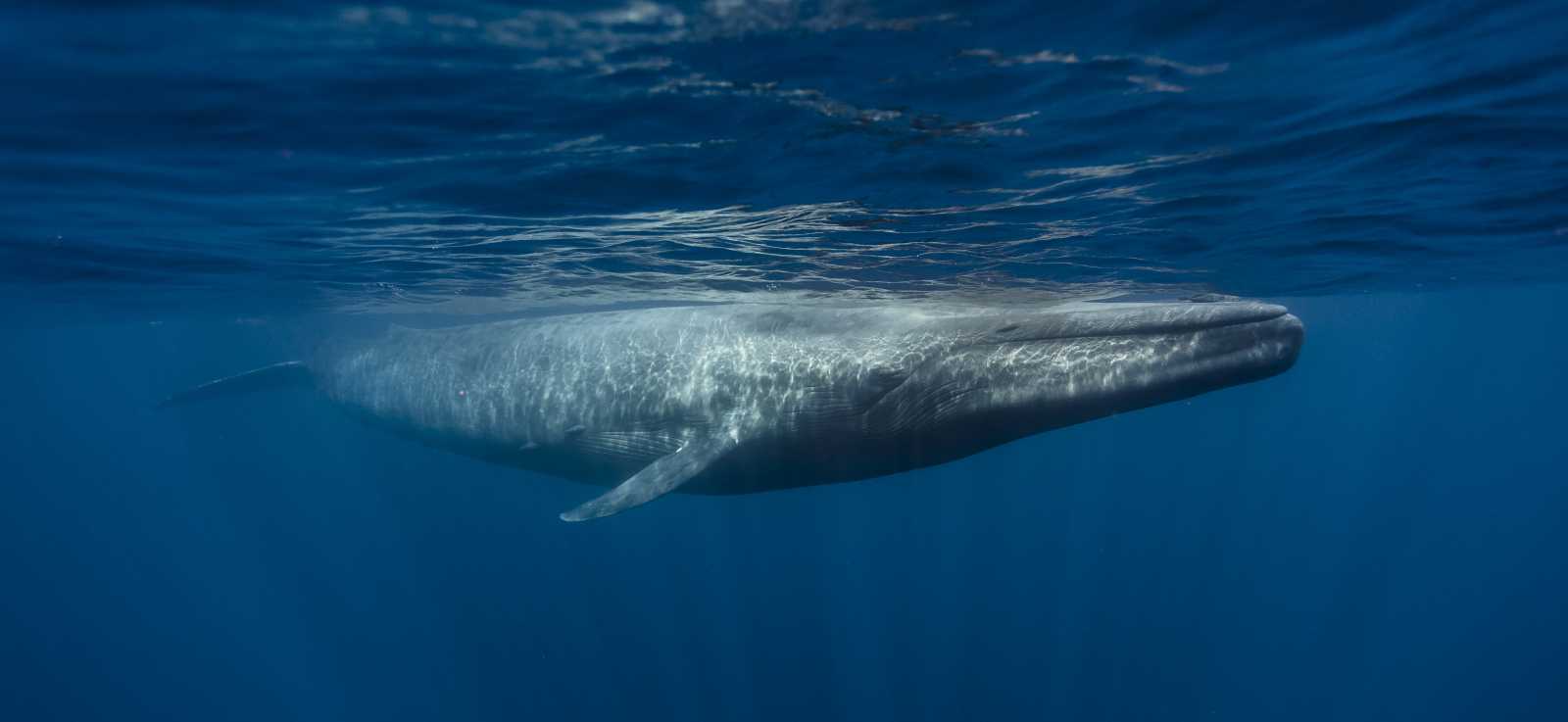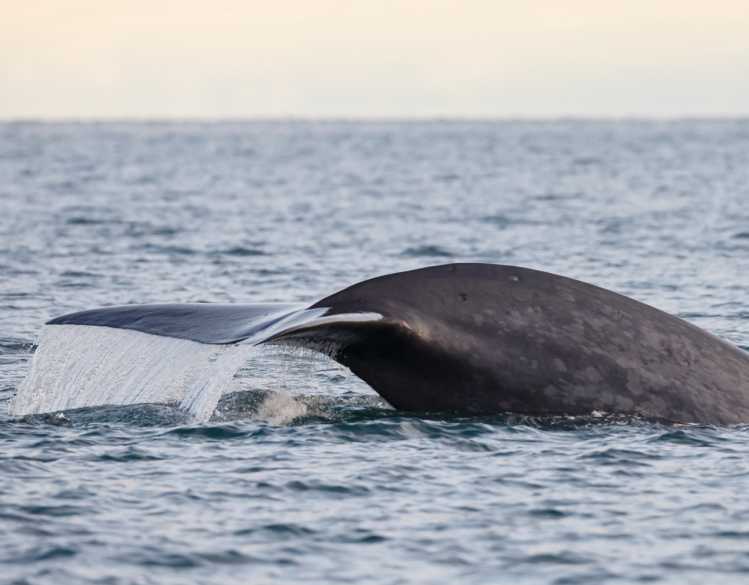
Blue Whale
Balaenoptera musculus
Learn More About Blue Whales
It is hard to envision the enormous size of a blue whale. As the largest animal on Earth, blue whales are about the length of three school buses, their heart alone is the size of a small car and they weigh on average 200,000 to 300,000 pounds. There are records of individuals growing to over 100 feet long. However, it’s more common to see individuals measuring 80 to 90 feet long.
Blue whales are named for their gray coloring, which appears light blue in the water. Cold water diatoms adhere to their skin and sometimes give their bellies a yellowish tinge, giving the blue whale its nickname of "sulfur bottom."
Blue whales are long and have a streamlined shape, with an extremely small dorsal fin and long pectoral flippers. Blue whales are rorqual whales, which is a family of baleen whales with pleated throat grooves that expand when the animal takes in water while feeding. In blue whales, 55 to 68 throat grooves extend from the throat to their navel, and their baleen is black with over 800 plates.
What do they sound like?
The greatest threats to marine mammals are caused by people, but we can also be their greatest champions.
Sign up for email from The Marine Mammal Center to stay updated on how you can be an advocate and champion for marine mammals like blue whales.
Habitat & Population Status
Blue whales have been found in all oceans around the world except for the Arctic Ocean. They’ve been observed swimming individually or in small groups, with pairs being the most common occurrence.
There are a number of distinct populations of blue whales. The North Pacific population resides in waters from Russia and Japan to Alaska and California, down to Costa Rica. There are two distinct groups in this area, with one set feeding and breeding closer to Russia and Japan, and the other closer to the United States. The Eastern stock is believed to spend winters off of Mexico and Central America, and feed during summer off the U.S. West Coast.
Today, blue whales are listed as an endangered species. The blue whale was too swift and powerful for the 19th century whalers, but with the arrival of harpoon cannons, these whales became a sought-after species for their blubber. Hunting reached its peak in 1931 when nearly 30,000 blue whales were killed. By 1966, blue whales were so scarce that the International Whaling Commission declared them protected throughout the world.
Thanks to those protections, the population has grown—today there are between 5,000 to 10,000 blue whales in the Southern Hemisphere and about 3,000 to 4,000 blue whales in the Northern Hemisphere. However, blue whales continue to face threats in their ocean home, such as ship strikes and impacts from ocean trash and fishing gear.
Despite their small numbers, we can still see blue whales in the summer and fall off the California coast, where they regularly migrate and feed in places like the Gulf of the Farallones and Cordell Bank national marine sanctuaries. The National Oceanic and Atmospheric Administration (NOAA) estimates that more than 1,500 blue whales feed along the California coast, one of the largest known gatherings of blue whales globally.

Yes, I want to save a life!

Yes, I want to save a life!
You’ll be giving sick and injured animals the best possible care at the Center’s state-of-the-art hospital. With your gift today, you are giving a patient a second chance at life in the wild.
Breeding & Behavior
Once female blue whales reach sexual maturity around 5 to 15 years old, they can give birth every two to three years. Blue whale pregnancies last about one year with calves typically born in December to February in low latitudes. Newborn blue whales are big babies! They can reach about 23 feet in length and can weigh 5,000 to 6,000 pounds at birth.
A nursing blue whale mother produces over 50 gallons of milk a day. The milk is about 35 to 50 percent milk fat, which allows the calf to gain weight at a rate of up to 10 pounds an hour, which amounts to over 250 pounds a day!
Calves stay with their mothers for about six to seven months. At 6 months old, calves have just about doubled in length, reaching on average over 52 feet long.
The life expectancy of blue whales is unknown, but it’s estimated to be between 80 to 90 years.
The favorite food of these gentle giants is krill, or small shrimp-like animals. Blue whales can eat up to 12,000 pounds of krill a day during the feeding season. They concentrate on feeding during the polar summers primarily around the Channel Islands, Monterey Bay and the Farallon Islands/Cordell Bank off of California. During the winter months, they migrate to warmer waters in Mexico and Central America.

















